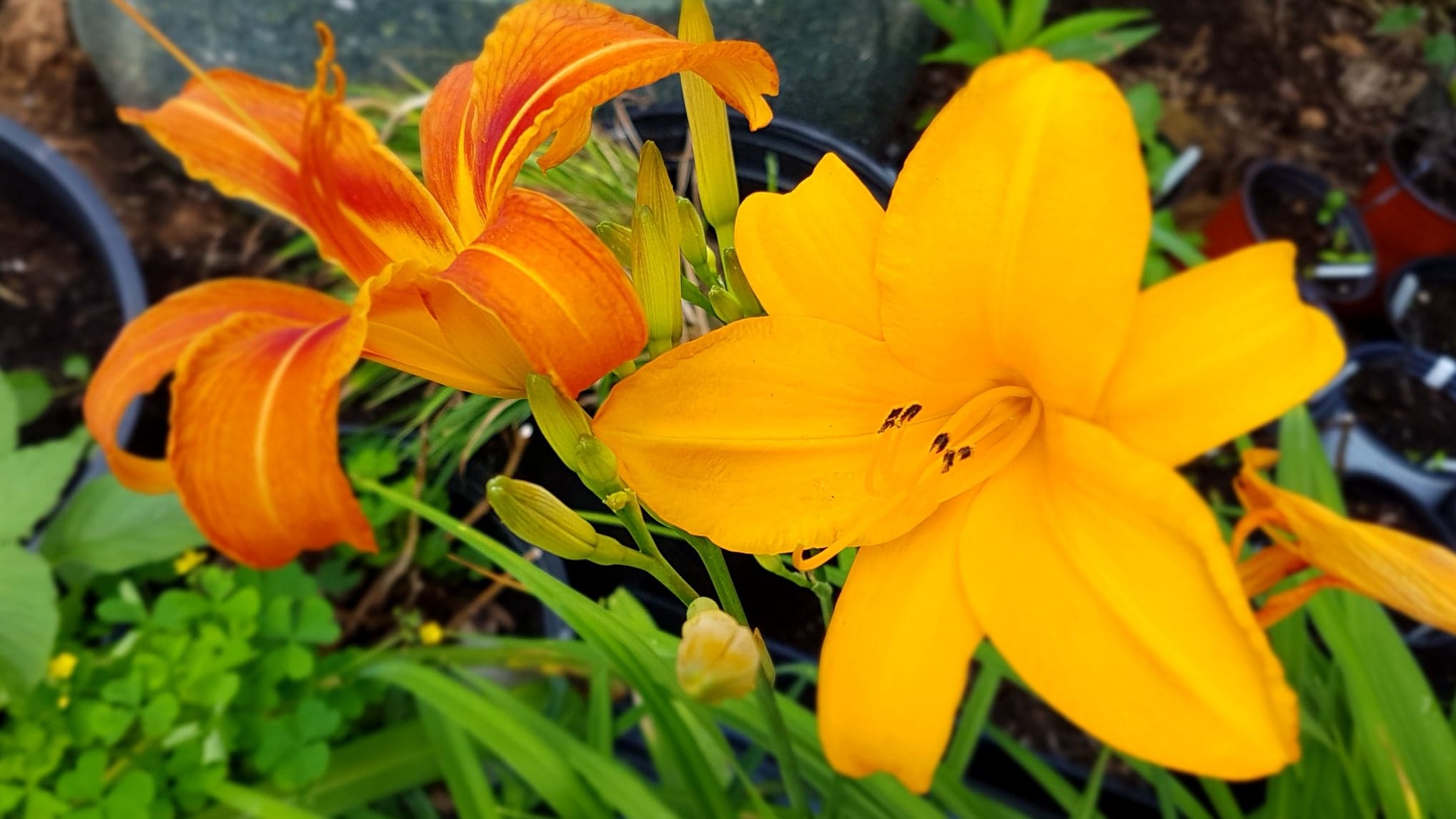
Daylilies are not just your ordinary garden flowers. With their vibrant colors, captivating shapes, and remarkable resilience, daylilies have gained popularity among gardeners and flower enthusiasts worldwide. These stunning perennials belong to the Hemerocallis genus and are known for their ability to produce multiple blooms in a single day. But there is more to daylilies than meets the eye!
In this article, we will uncover 19 mind-blowing facts about daylilies that will leave you amazed and eager to grow these beauties in your own garden. From their fascinating history and diverse varieties to their surprising health benefits and symbolic meanings, daylilies have so much to offer. So, let’s dive in and explore the wonders of these extraordinary flowers!
Key Takeaways:
- Daylilies are not true lilies, but they come in over 80,000 varieties with vibrant colors and edible flowers. They are low-maintenance, deer-resistant, and attract hummingbirds and butterflies, making them a perfect addition to any garden.
- Daylilies have a rich history of cultivation, symbolize motherhood and fertility, and can be used for erosion control and natural dyes. They are also known for their short blooming period, but each plant produces multiple flower buds, extending the blooming period for several weeks.
The daylily belongs to the Hemerocallis genus.
The daylily, scientifically known as Hemerocallis, is a beautiful flowering plant that is native to Asia. With its vibrant and varied colors, it has become a popular choice among gardeners all over the world.
There are over 80,000 registered daylily cultivars.
The daylily has been cultivated for centuries, resulting in an incredible variety of cultivars. These cultivars come in various shapes, sizes, and colors, offering a wide range of options for garden enthusiasts.
Daylilies are known for their short blooming period.
Unlike other flowers that bloom for several weeks, daylilies bloom for only one day. However, each plant produces multiple flower buds, so the blooming period can extend for several weeks.
Daylilies are incredibly adaptable and can thrive in different climates.
Daylilies are known for their hardiness and ability to adapt to various climate conditions. They can withstand both extreme heat and cold temperatures, making them suitable for a wide range of regions.
Daylilies are not true lilies.
Despite their name, daylilies are not true lilies. True lilies belong to the Lilium genus, while daylilies belong to the Hemerocallis genus. However, both plants share some similarities in terms of their showy flowers.
Daylilies have edible flowers.
Some daylily flowers are edible and can be used in cooking. They have a slightly sweet and crunchy taste, and are often used in salads, stir-fries, and other culinary creations.
Daylilies are perfect for erosion control.
Due to their extensive root system, daylilies are excellent for preventing soil erosion. Their long, fibrous roots help stabilize the soil, making them a popular choice for landscaping projects in areas prone to erosion.
Daylilies attract hummingbirds and butterflies.
The vibrant, trumpet-shaped flowers of daylilies attract hummingbirds and butterflies, making them a wonderful addition to any pollinator-friendly garden. These beautiful creatures are not only visually appealing but also aid in pollination.
Daylilies come in a wide range of colors.
From bright yellows and oranges to soft pinks and purples, daylilies offer an impressive array of colors. Some cultivars even have unique patterns and markings on their petals, adding further intrigue to their beauty.
Daylilies are low-maintenance plants.
One of the reasons why daylilies are so popular among gardeners is their low-maintenance nature. They are relatively tolerant of different soil conditions and require minimal pruning or deadheading.
Daylilies have medicinal properties in traditional Chinese medicine.
In traditional Chinese medicine, daylilies are believed to have various medicinal properties. They are often used to treat inflammation, improve digestion, and promote overall well-being.
Daylilies can be used to make natural dyes.
The petals of some daylily cultivars contain natural pigments that can be used to create dyes. These dyes can be used for coloring fabrics, yarns, or even to create natural artwork.
Daylilies symbolize motherhood and fertility.
In certain cultures, daylilies are associated with motherhood and fertility. They are often gifted to expectant mothers or used in celebrations related to childbirth and new beginnings.
Daylilies have been hybridized extensively.
Plant breeders have spent years hybridizing different daylily varieties to create new and unique cultivars. This extensive hybridization has contributed to the wide range of colors and forms available today.
Daylilies can be grown in containers.
For those with limited garden space, daylilies can be grown successfully in containers. This allows individuals to enjoy their beauty and vibrant blooms even on balconies or small patios.
Daylilies are deer-resistant.
Daylilies are generally not preferred by deer, making them a suitable choice for gardens in areas where deer are a common concern. Their tough foliage and unpalatable taste often deter these animals from munching on them.
Daylilies have a long history of cultivation.
Daylilies have been cultivated and appreciated for centuries. They were highly valued in ancient China and have since gained popularity worldwide for their beauty and resilience.
Daylilies can be divided to create new plants.
One of the benefits of growing daylilies is their ability to be divided and propagated. By dividing mature clumps, gardeners can create new plants and expand their daylily collection or share them with fellow enthusiasts.
Daylilies are effective as ground covers.
With their dense foliage and ability to spread, daylilies can effectively serve as ground covers. They help suppress weed growth and provide an attractive carpet-like appearance in gardens and landscape beds.
Conclusion
In conclusion, daylilies are truly fascinating and captivating flowers that grace our gardens with their beauty. From their vibrant color variations to their incredible adaptability, these plants have undoubtedly earned their place as a favorite among garden enthusiasts. Not only do daylilies serve as stunning ornamental plants, but they also offer numerous benefits, such as attracting pollinators and being low-maintenance. Whether you’re a seasoned gardener or just starting out, incorporating daylilies into your garden will undoubtedly elevate its charm and allure. With their ability to thrive in various climates, their versatility in landscaping, and their long-lasting blooms, daylilies truly are a remarkable addition to any garden. So why not bring a touch of magic and elegance to your outdoor space with these incredible flowers?
FAQs
Q: How long do daylilies bloom?
A: Daylilies typically bloom for several weeks, with individual flowers lasting for about one day. However, each flower scape holds multiple buds, which ensures continuous blooming throughout the summer.
Q: Can daylilies survive in different climates?
A: Yes, daylilies are known for their adaptability and can thrive in a wide range of climates. They are hardy perennials and can withstand both extreme heat and cold temperatures, making them suitable for various regions.
Q: Are daylilies easy to care for?
A: Absolutely! Daylilies are low-maintenance plants that require minimal care. They are drought-tolerant and are not prone to pests or diseases. Regular watering, occasional fertilization, and deadheading spent blooms are all that’s needed to keep them healthy and thriving.
Q: Can daylilies be grown in pots or containers?
A: Yes, daylilies can be grown successfully in pots or containers. Ensure that the container has good drainage and enough room for the plant’s roots to spread. Regular watering and appropriate fertilization are essential to ensure their growth and blooming potential.
Q: Can daylilies be divided and propagated?
A: Yes, daylilies can be easily divided and propagated. Dividing them every three to five years helps rejuvenate the plants and promote better blooming. The divided sections can be replanted in your garden or shared with other gardening enthusiasts.
Q: Can daylilies be used for culinary purposes?
A: While daylilies are not commonly used as food, some varieties are edible. However, it is crucial to exercise caution as not all daylilies are safe for consumption. Always ensure proper identification before using daylilies for culinary purposes.
Daylilies captivate gardeners with their vibrant colors and adaptability, but there's even more to explore about these fascinating flowers. Delve into the intriguing world of Hemerocallis and uncover little-known facts that will make you appreciate them even more. If you're looking to add some stunning variety to your garden, consider the wide range of lily types available, each with its own unique charm and characteristics. Whether you're a seasoned gardener or just starting out, learning more about daylilies and lilies will help you create a truly spectacular outdoor space that you'll enjoy for years to come.
Was this page helpful?
Our commitment to delivering trustworthy and engaging content is at the heart of what we do. Each fact on our site is contributed by real users like you, bringing a wealth of diverse insights and information. To ensure the highest standards of accuracy and reliability, our dedicated editors meticulously review each submission. This process guarantees that the facts we share are not only fascinating but also credible. Trust in our commitment to quality and authenticity as you explore and learn with us.


